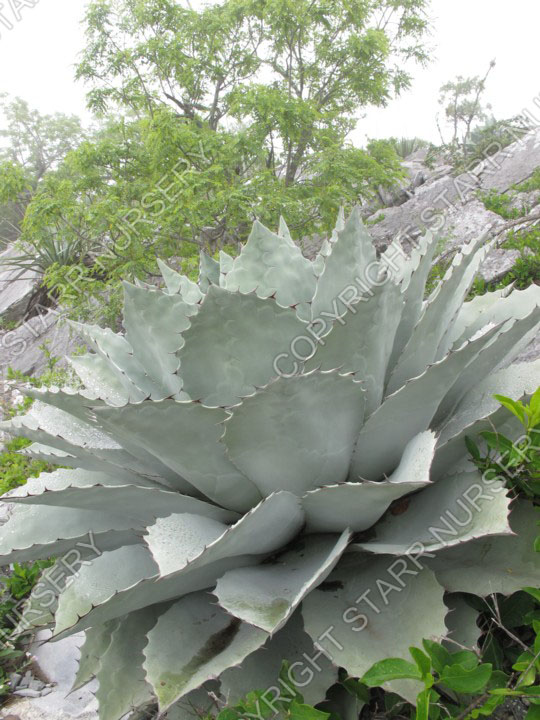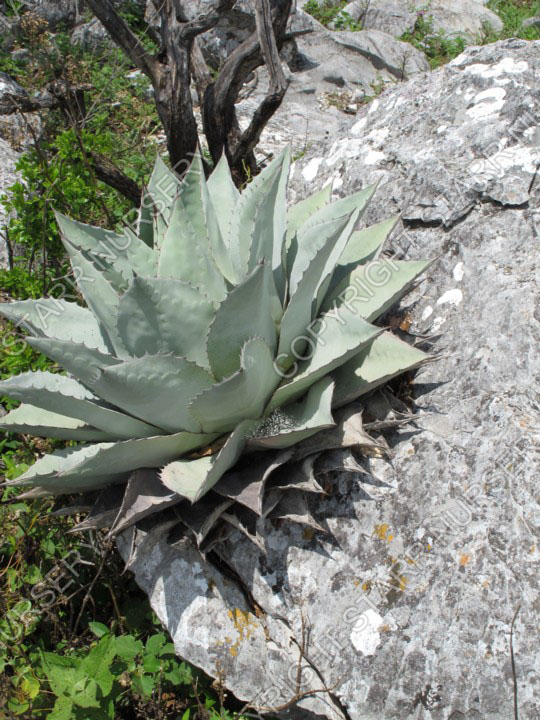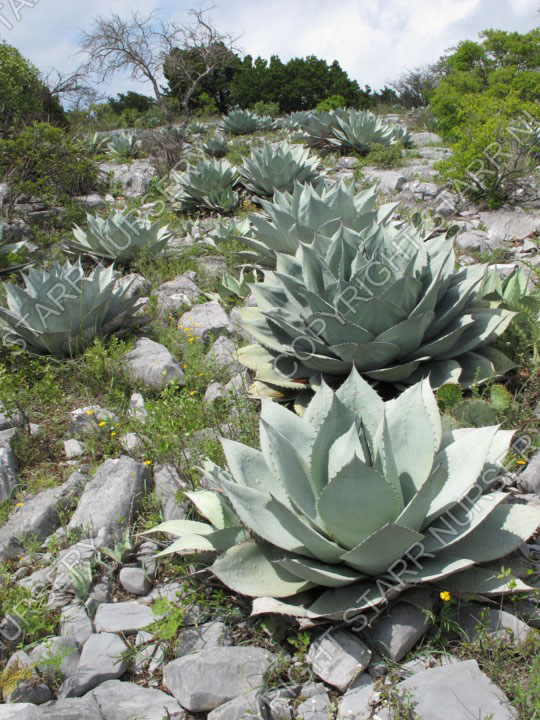Agave ovatifolia (Whale’s Tongue Agave) – Plant of the Month
Agave ovatifolia was first brought in to the horticulture trade in the United States by renowned Texas nurseryman, Lynn Lowrey in the mid-1980’s as an undescribed species. In 2000, I was sent a photo of an agave that I knew right away was not described in the literature and set about tracking down the history of the plant. It was at that time I was told that Lynn Lowrey would travel to the Mexican state of Nuevo Leon where he had befriended the then Chief of Police of the town of Lampazos. The chief owned some land up in the mountains nearby where he implored Lynn to botanize. While botanizing, Lynn found this unusual agave and eventually got some plants to friends in Texas.

- A tight rosette with many silvery blue leaves.
One of those plants bloomed and produced bulbils, one of which eventually made its way to a micropropagation lab (commonly referred to as a tissue culture lab), and would later be grown for landscape use. Meanwhile, I contacted Dr. Jose Angel Villarreal, a botanist from the Monterrey-Saltillo area, about working together to put a botanical name to this undescribed plant. In 2001, we were able to connect for a trip to the ranch in the Sierra Lampazos, collect herbarium specimens, and give the plant its botanical name of Agave ovatifolia.
I hope you enjoy the following pictures which were taken at the locality that Jose Angel and I visited to write the original description for Agave ovatifolia. Stop by the online store to purchase your very own Whale’s Tongue Agave!

Agave ovatifolia with nice ripples on the leaves.
Agave ovatifolia grows to be a large plant, reaching about 3-4 feet tall by 5-6 feet across. The powdery blue-silver leaves are extraordinarily wide, topping out at about 11 inches, and deeply cupped on the upper side. Sometimes the leaves will have distinctive ridges and valleys running the entire length. Given enough summer water, these can be grown in full sun even in the hot, interior low elevation zone of the southwestern U.S., although they really prefer a touch of summer shade.

A beautiful specimen perched on the rock.

One showing off its teeth.

A young plant hanging out on the limestone.

The thick flower stalk is beginning its climb skyward.
In late spring, the thick flower stalk begins to appear, and by summer the many side branches elongate to reveal large clusters of numerous flowers that attract many kinds of pollinators. Growing plants from seed results in a wide variety of forms, with leaf color ranging from the most silvery blue to lighter blue-green. The marginal teeth can be small to large and the ripples on the leaves can be very prominent to practically non-existent.

Many beautiful plants as far as the eye can see.

The leader of the pack is a stunning specimen!
If the pictures above are any indication, a landscape with a mass planting of Agave ovatifolia growing among boulders and mixed with several flowering perennials, small shrubs with colorful flowers and even small trees would be an impressive sight!
Check out the agavaceae.com website for additional pictures and a link to the original description.
I hope you have enjoyed the pictures and will stop by the online store to get your own Agave ovatifolia before they sell out.
Posted in: Uncategorized
Leave a Comment (6) ↓
Very beautiful. Wonder how they would do here on the east coast.
They are typically hardy to about 5 F, and Tony at Plant Delights grows them in Raleigh, NC.
They are absolutely gorgeous agaves. It such a terrible shame that I live so far away. I would certainly have liked to give them try.
Thanks for the literature Greg…Amazing Agave!
Love this plant….rotten weevils got to my beauty. Once you read this….go find me your best specimen…..and I will visit you! It’s the perfect plant for that spot you designed!
Hey Dave,
I have some nice ones in 6 inch pots.